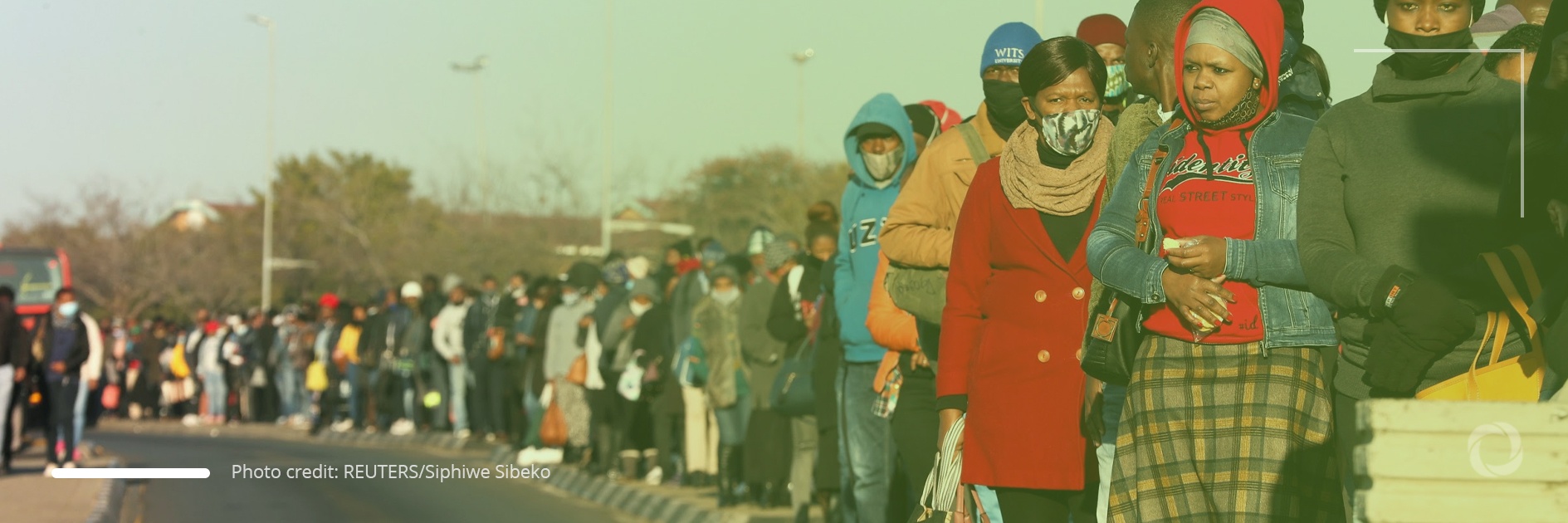Pandemic-imposed lockdowns deprived hundreds of thousands of South Africans of jobs in July to September 2021 alone, putting the unemployment rate at its highest since 2018. Employees in the trade sector were the worst hit whereas those from the financial sector were the least affected. Moreover, the pandemic has only deepened disparities in terms of gender, race, and age, indicating once again the vulnerability of women. Against this background, experts have warned that further lockdowns would simply worsen the situation.
 Alarming statistics
Alarming statistics
As defined by Statistics SA, the standard definition of unemployment is a person aged between 15 and 64 who is unemployed at a specific time but is seeking work while the expanded definition refers to people who have stopped looking for work.
According to the expanded definition, South Africa saw its unemployment rate reaching 46.6% in July to September 2021. This was an increase of 2.2% against the second quarter of 2021, according to the country’s Quarterly Labour Force Survey (QLFS) for the third quarter of 2021.
South Africa’s Statistician-General, Risenga Maluleke, specified that “the number of unemployed persons decreased by 183,000 to 7.6 million compared to the second quarter of 2021, whereas the number of discouraged work-seekers increased by 545,000 (16.4%).”
The number of people who were not economically active for reasons other than discouragement increased by 443,000 (3.3%) between the two quarters resulting in a net increase of 988,000 in the not economically active population.
 Gender, race disparities
Gender, race disparities
Data shows clear age, gender, and race disparities in the South African labor market.
According to the QLFS, the unemployment rate among women was 37.3% in the third quarter of 2021 compared to 32.9% among men as per the official definition of unemployment. The official unemployment rate among black African women was close to 1:2 at 41.5% during this period compared to 9.9% among white women, 25.2% among Indian/Asian women, and 29.1% among coloured women. Young people were also badly affected with unemployment standing at over 77% among this group.
 Experts’ concerns
Experts’ concerns
Economist Duma Gqubule, speaking on the state broadcaster the SABC, said that South Africa was “heading towards 50 percent of unemployment for South Africans of all races.” He further emphasized, “If that doesn’t convince you that something has to change, we can’t continue with business as usual, nothing will ever make you change.”
The Congress of South African Trade Unions (Cosatu), which was founded in 1985, commented that:
“further lockdowns in response to rising COVID-19 numbers are likely to worsen unemployment numbers, and this will result in higher unemployment statistics in the near future.”
A statement released by the trade union federation noted that energy security is at the heart of economic performance and job creation.
“[State-owned power utility] Eskom’s debt and load shedding problems cannot be wished away. This requires all major role players and stakeholders to strategize and come up with a turnaround plan that will see Eskom turning the tide on energy insecurity. Load shedding costs the country billions in revenue each day and as a result, worsens unemployment levels,” the statement said.

